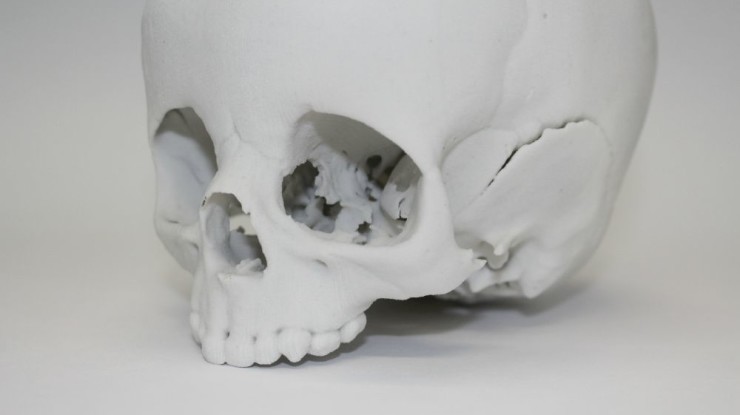QUICK FACTS
- Who: Martyn Cooke, Head of Conservation at the Royal College of Surgeons of England
- What: 3D printed, anatomically correct head model for surgical simulation
- Where: Royal College of Surgeons, London
- Tech: ProJet 660 from 3D Systems
BRIEF
After successfully replicating an anatomically correct head model for a surgery simulation, Martyn Cooke, Head of Conservation at the Royal College of Surgeons, was approached by a paediatric specialist who wanted to undertake a similar project though specifically utilising a skull approximately 2 ½ years of age.
Although the RCS’ medical museum was in possession of a suitable specimen, it was not in a condition to be manually handled for a traditional replication process due to its fragility and historical significance.
It was during this time that Cooke was made aware of several projects with similar predicaments which were overcome thanks to an innovative new approach. Referred by colleagues at the Natural History Museum, Cooke approached INITION to assess and undertake the project.
Solution
INITION was able to take the CAD model provided by the Royal College of Surgeons and adapt the data in order to optimise for 3D printing. After discussions with the client as to the purpose for the project and what would be the use of the model, we settled on the use of the ProJet 660 3D printer which would give high resolution and also replicate more realistically the feel of the original piece.
Results
The 3D printed skull was a successful substitution for a genuine specimen, providing the paediatric surgeon with the necessary tools with which the surgery simulation could be performed.
Discussing the use of 3D printing in his field of work, Cooke said:
“This seemed like an ideal opportunity to trial 3D printing which provided a highly detailed and accurate model with no damage to the fragile original. We had seen examples of 3D printing at the Natural History Museum and were in no doubt that this technology would be perfect for our project.
We are now looking at other opportunities to use this technology and are in discussions with several surgical specialists to investigate other areas of surgical training and simulation that might benefit from this technology,” – Martyn Cooke.






